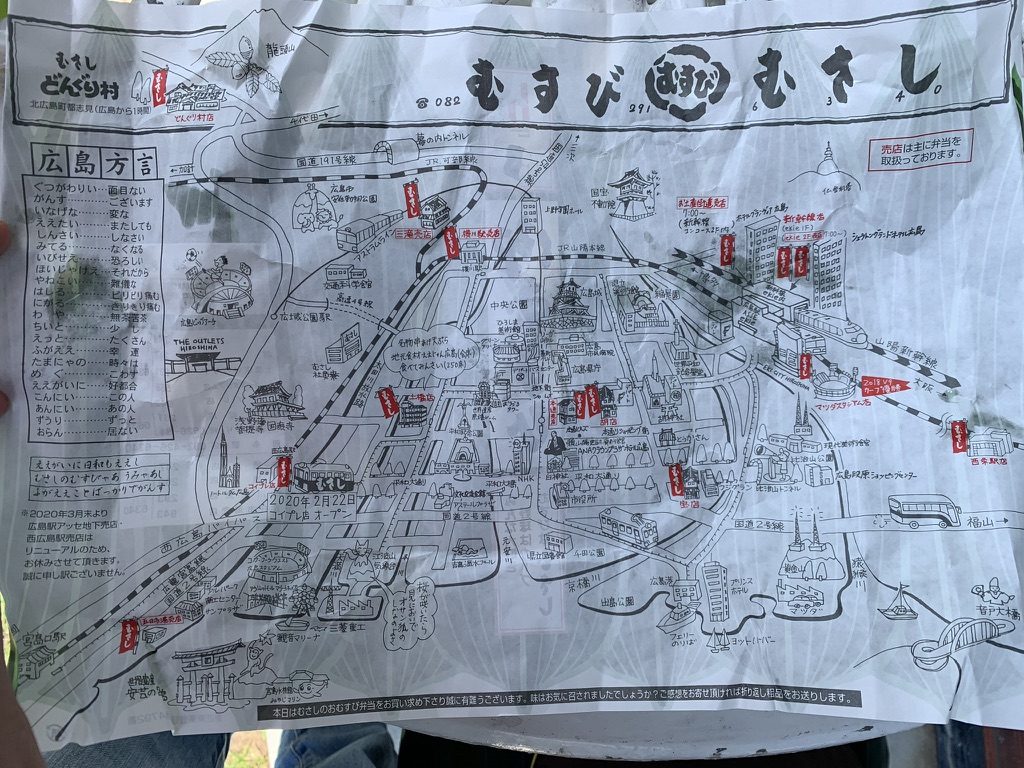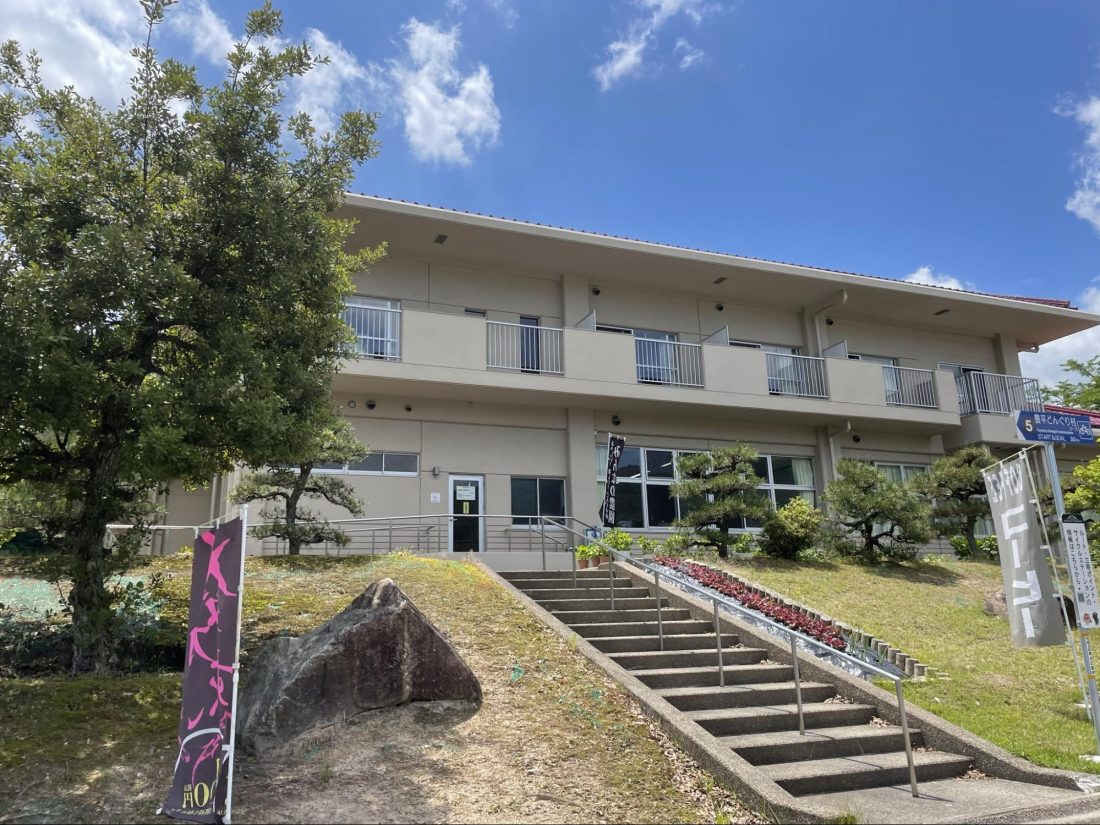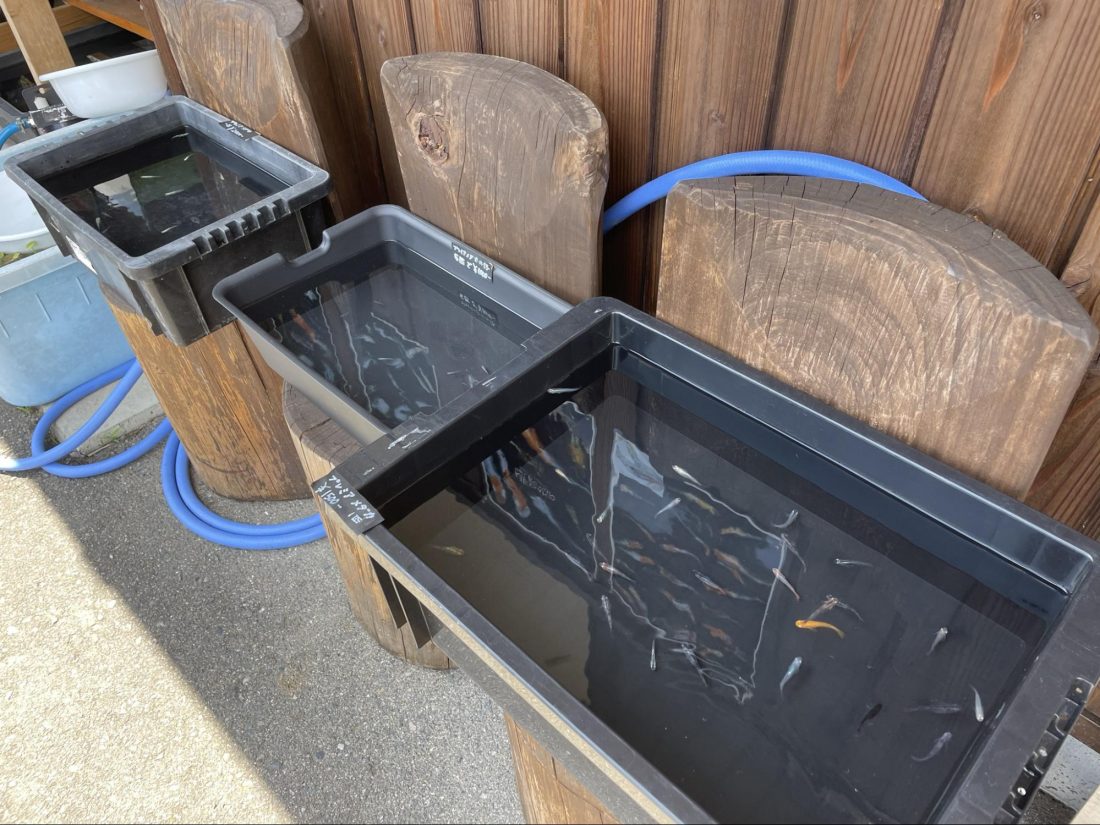100 Stories
Donguri village: food, fun and nature
I’ve always enjoyed calm, remote places to eat typical Japanese dishes, such as sushi or noodles. It might be just an image I have come to develop living in Hiroshima, but Japan really rhymes with nature and peace for me. I truly enjoy the way this country has managed to preserve its former beauty outside of cities, whilst places such as Tokyo have completely accommodated to the modern, always-in-a-rush way of life (although Tokyo has some amazing quiet and peaceful places as well, such as shrines and parks). Consequently, there is something quite pittoresque and awfully charming about enjoying a bowl of noodles in the Japanese countryside: it takes little more to make me feel like I’ve traveled back in time. A few notes of shamisen (三味線, a traditional Japanese instrument resembling a guitar in some aspects) playing in the background, a stand of kingyo-sukui (金魚すくい, a game played during festivals where you use a small net to catch goldfishes from a water tank) somewhere around, and that’s it, I’ve already forgotten what day it is, I almost feel like I’m about to witness some epic event, but I’m just eating noodles really. If you want a nice retreat from the city that allows you to delve into a pure Japanese ambiance, to eat noodles, buy fresh vegetables, do some typical activities (hot springs, catching fishes, making noodles yourself…), then I happen to know a perfect place, a bit to the North of Hiroshima : Toyohira Donguri Mura (let’s call it Donguri village, just between ourselves).
Overview
- 01. A retreat in the north of Hiroshima: grocery shopping and noodles where food is the freshest
- 02. Maybe an ice-cream and a few vegetables for dessert?
- 03. Fish catching, hot springs… everything you need to relax
- 04. My moment of joy: catching goldfishes in the midst of the summer
- 05. Where to find Donguri Village
A retreat in the north of Hiroshima: grocery shopping and noodles where food is the freshest
Donguri village is quite far from the center of Hiroshima, so it requires a bit of a drive to get there: you will get to see plenty of nature on the way there, and Donguri village itself stands in the midst of nature so to say, so it really is a sort of retreat from the city. After parking my car, the first thing I saw was the huge Musashi store on the side of the road, right outside of the parking lot. 
That is usually people’s first stop, and it gets quite crowded around lunch time. Musashi is a very popular and fairly old chain of noodle restaurants established in Hiroshima since 1958 (for the purpose of comparison, 1958 is the year the Tokyo Tower was erected, so it is quite an old chain!), and now comprises ten outlets around Hiroshima, including the one in Donguri. Musashi is rather popular in Hiroshima, and they are especially well-known for their musubi, a type of rice ball (おにぎり, onigiri) filled with different ingredients, and much larger than the usual rice balls you can find in most convenient stores.
Anyhow, Musashi is a great place to stop for lunch, and a lot of people do go through the effort of driving to Donguri, not only because Musashi’s food is delicious (I will later explain all the other activities there), but that is definitely one reason. On top of that, this specific Musashi store sells products that they grow locally, such as melons, potatoes, sweet potatoes… at a really low price and it’s the freshest vegetables you can get your hands on: it’s literally grown right there!
at a really low price and it’s the freshest vegetables you can get your hands on: it’s literally grown right there!
That’s a great bonus, because you can have lunch and go grocery shopping for dinner in one go. Consequently, around lunch time, I was surprised to see so many people in such a remote place: not all of them were here to eat lunch, some people were queuing for the sole purpose of buying vegetables, so the tenants separated customers into two lines, which still left quite a few people waiting in line for noodles; I was one of them.
The restaurant in itself has an original architecture that gives it an old-school Japanese vibe, which I personally love: masks of Tengu, figures of raccoons, wood sculptures… everything you need to feel like you’re having a typical Japanese experience.  The restaurant features traditional seats with low tables (the kind of table where you sit on a cushion on the floor rather than on a chair), standard seats, seats around a heater, and even terrace seats. The terrace seats are quite nice, because they feature a playground for children, so they might be the best option when coming to the restaurant as a family.
The restaurant features traditional seats with low tables (the kind of table where you sit on a cushion on the floor rather than on a chair), standard seats, seats around a heater, and even terrace seats. The terrace seats are quite nice, because they feature a playground for children, so they might be the best option when coming to the restaurant as a family. In any case, no matter what seat you take, your meal will be accompanied with sounds of shamisen and traditional Japanese theatre plays. It is quite lovely and I enjoy it a lot whenever I go. The restaurant also comprises a second floor where is stored a collection of paintings, mostly painting of Mt Fuji;
In any case, no matter what seat you take, your meal will be accompanied with sounds of shamisen and traditional Japanese theatre plays. It is quite lovely and I enjoy it a lot whenever I go. The restaurant also comprises a second floor where is stored a collection of paintings, mostly painting of Mt Fuji; this is not meant as an eating area, but I enjoy going there just to take a look at the view, since one can see the mountains very clearly from there.
this is not meant as an eating area, but I enjoy going there just to take a look at the view, since one can see the mountains very clearly from there. The food is really good, my personal favourite in terms of noodle is their udon noodles with meat (肉うどん, Niku udon)
The food is really good, my personal favourite in terms of noodle is their udon noodles with meat (肉うどん, Niku udon) , and a mountain bandit rice ball (山賊むすび, sanzoku musubi), which is their speciality. The package of the rice ball is in itself amusing: it is actually a map of the different Musashi shops around Hiroshima,
, and a mountain bandit rice ball (山賊むすび, sanzoku musubi), which is their speciality. The package of the rice ball is in itself amusing: it is actually a map of the different Musashi shops around Hiroshima, and it even gives you a list of expressions in the Hiroshima dialect.
and it even gives you a list of expressions in the Hiroshima dialect. If you think you’re done once your meal is finished, you are far from the truth: let me tell you about all you can do in Donguri.
If you think you’re done once your meal is finished, you are far from the truth: let me tell you about all you can do in Donguri.
Maybe an ice-cream and a few vegetables for dessert?
After finishing my udon, what I particularly enjoy doing is going next door for dessert. The entrance to our next activity features yet another activity: an ice-cream parlor!
The entrance to our next activity features yet another activity: an ice-cream parlor! That way, I get to eat a vanilla-strawberry soft cream right after lunch, which is really the perfect complement after a good bowl of noodles.
That way, I get to eat a vanilla-strawberry soft cream right after lunch, which is really the perfect complement after a good bowl of noodles.  Once replenished, my next stop is the greenhouse! I was not kidding when I said that Musashi was selling products grown right there, there is an actual greenhouse where you get to buy most plants you can think of (edible or not, even carnivorous plants are sold there) for a very affordable price.
Once replenished, my next stop is the greenhouse! I was not kidding when I said that Musashi was selling products grown right there, there is an actual greenhouse where you get to buy most plants you can think of (edible or not, even carnivorous plants are sold there) for a very affordable price.
You can even buy seeds and gardening products there; I don’t know much about gardening but I believe it has everything! There is also a more traditional store next to it, which sells vegetables and local products as well as more generic goods. Once again, it really is convenient to have all of those things so close to each other: I like to come to Donguri for lunch and buy ingredients for dinner at the same time. But let’s stop talking about food for an instant, there is actually more to do here.
Fish catching, hot springs… everything you need to relax
You really have to imagine Donguri village as being this huge place filled with activities for you to enjoy, and there is clearly a bit of everything. For instance, if you end up coming to Donguri Village just for a break on a long road trip, you might want to spend the night there: there are hotels all around, with hot springs included, for you to relax after a long drive. If, as I was, you are only here for a quick stop before returning to Hiroshima, then there is still a lot to do. For instance, there is a workshop that allows visitors to make their own noodles!
If, as I was, you are only here for a quick stop before returning to Hiroshima, then there is still a lot to do. For instance, there is a workshop that allows visitors to make their own noodles!  It’s really fun, and I even got a medal at the end to reward me for this soba-making experience. During the weekend, there is also a stand of goldfish catching: you can pay 500 yen to try and catch a goldfish (a Medaka, メダカ, to be specific), and it’s clearly harder than it looks.
It’s really fun, and I even got a medal at the end to reward me for this soba-making experience. During the weekend, there is also a stand of goldfish catching: you can pay 500 yen to try and catch a goldfish (a Medaka, メダカ, to be specific), and it’s clearly harder than it looks.
My moment of joy: catching goldfishes in the midst of the summer
If there is one thing that has always fascinated me with Japanese festivals, it’s kyngyo-sukui, the goldfish-catching game I was talking about during my introduction. It is so typically Japanese, so fun, and yet so difficult, it is an actual symbol of Japanese popular culture. I never got to experience it as a kid because I was not born in Japan, but I’ve played quite a few times since I started living in Hiroshima. Every time is very fun, and the kyngyo-sukui at Donguri is as well. Since this one involves medaka, which can be quite expansive, it adds a thrill to the game, but it doesn’t make it easier: those things swim really fast! So there I was, trying to scoop medaka with a bowl inside of this huge water tank, and I had so much fun that the tenant actually let me choose one, even though I completely failed. It is an amazing experience and I truly recommend it. Having « caught » my goldfish, I came back with a sense of accomplishment, and the feeling that I had a great day.
Where to find Donguri Village
As I said earlier, it is a bit of a drive, since Donguri Village is in Kita-Hiroshima (北広島), in Yamagata-Gun (山県郡), so you can expect a 50 minutes drive from Hiroshima Station. The quickest way is to take the expressway, it will cost approximately 550 yen to go there, and the same amount on the way back.





